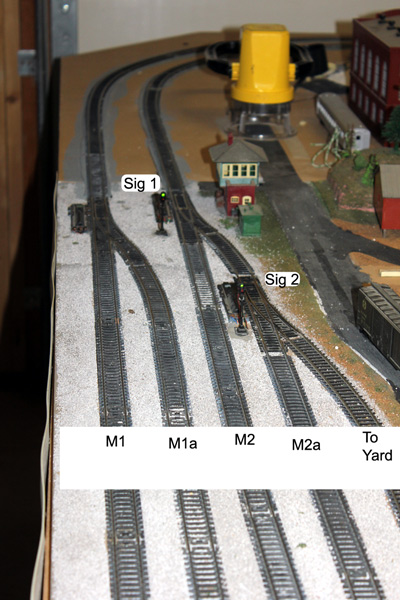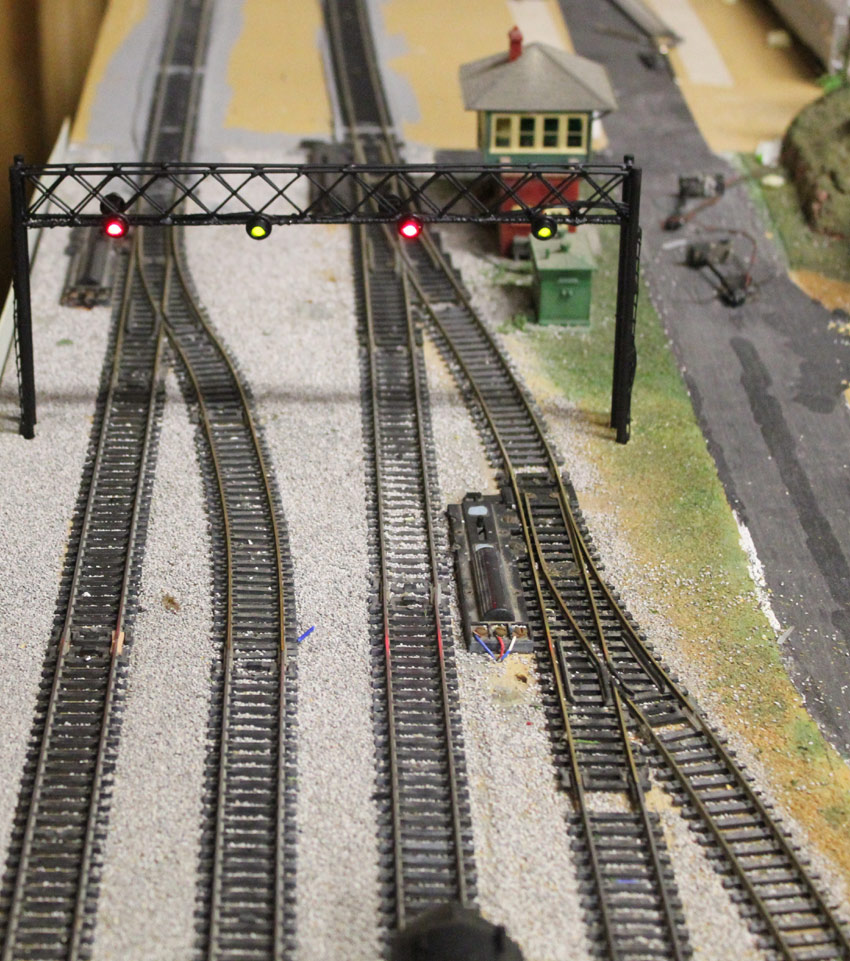Tom,
Your signals are not properly set up.
What you have there is a semi-complex interlock. All traffic on the mainlines and the yard lead must be signaled and controlled in both directions. A signal bridge across all four mainline tracks looking out away from the yard must control the mainline switches.
Thanks Manny!
M1 is my outside mainline.
M1a is a long siding for M1 only.
M2 is an inner main line
M2a is primarily a long siding for M2 but it not only has the obvious feed to the west yard area, it also has a turnout at the very far south end into a small group of three east side "stubs" where I park engines. So M2a really feeds two yard areas, one east and one west. The east is fed at the south end that you cannot see.
I have two crossovers between M1 and M2 elsewhere, and in the west yard I can feed off to M1 or M2 in either direction.
I cannot, as you pointed out, get from M1 to M2 on the east side of this area of my layout. I was eventually going to add a crossover between M1 and M2 just north of where the interlock is where it is a two track mainline. That's down the road a bit.
So the sidings, M1a and M2a, should have a signal bridge. I can move and turn around the signals I have, and add a dwarf to the yard feed.
It is actually all interlocked now with relays for power control (I have DC control) so adding signals is extremely easy. Just a matter of connecting back to the turnout control system where for normal position dc + is green and for thrown position dc - appears. The yard dwarf would be red=+ and green= negative. The mainlines would be red=negative and green=+. This way when the TO's are flipped to siding or the siding M2a is flipped to the yard on the toggle switches, the lights should be right.
All of my turnouts have a + 12 volt to common when in normal position, and a -12 volt to common when NOT normal through position. That's integrated in my control panel. It gives me one wire (with the common rail as a reference) that can be used as a position indicator for signals or power control relays. Interlocking signals and power controls is pretty simple once I learn the rules.
Thanks for the help.
Tom
here is a map:





